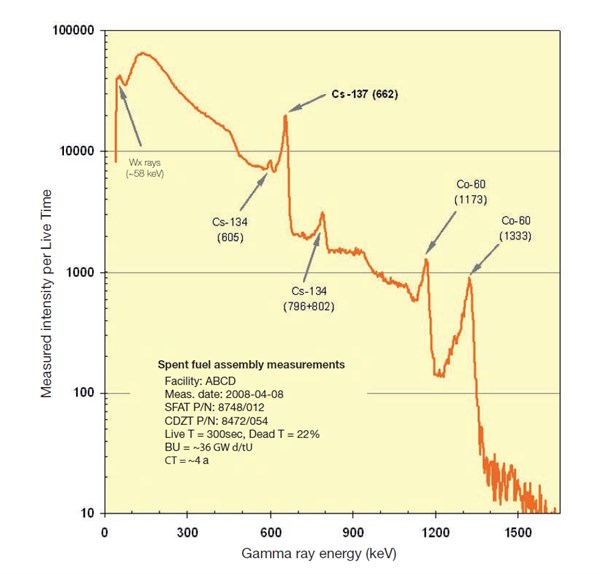The spent fuel attribute tester (SFAT), consisting of a
multichannel analyser electronics unit and a NaI or CdZnTe
detector, is used for taking measurements from the top of a fuel
assembly as it sits in the storage rack. The SFAT provides a
qualitative verification of the presence of spent fuel through
detection of particular fission product γ rays - either from 137Cs
(662 keV) for fuel that has cooled for longer than four years or
from short lived fission products such as 95Zr/95Nb (757/766 keV)
for fuel with short cooling times. Activation products such as 60Co
are also identifiable. The SFAT is particularly helpful in
situations where Cerenkov viewing cannot provide verification (e.g.
when Cerenkov radiation is weak because the spent fuel has low
burnup and/or a long cooling time, or when the water in the storage
pond is insufficiently clear). The SFAT detector and its lead
shielding are housed in a watertight stainless steel container
which is submerged in a storage pond and positioned over the item
to be examined. A watertight collimator pipe is attached below the
detector housing to permit only radiation from the principal
assembly, rather than from adjacent assemblies, to reach the
detector. A multichannel analyser provides for the acquisition,
analysis and archiving of data and supplies power to the detector.
The intensity of the selected γ rays from a specific fuel assembly
is compared with the spectrum from the gap separating the assembly
from its neighbour, to confirm the presence of fission or
activation products in the measured assembly.
 Typical γ-ray spectrum acquired with
SFAT.
Typical γ-ray spectrum acquired with
SFAT.
(Source: IAEA Safeguards Techniques and Equipment)